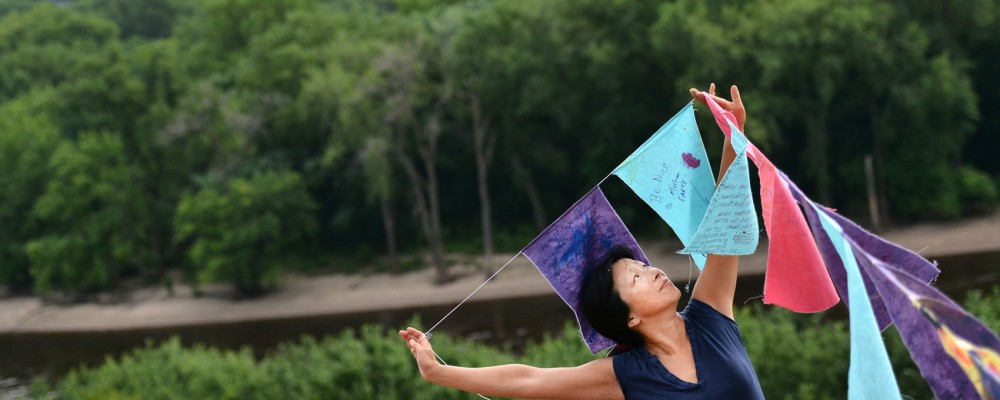What: Kinship of Rivers
Where: The Soap Factory, 514 Second St. SE, Minneapolis
When: 10 a.m.-8 p.m., Saturday, programs and performances throughout the day.
It’s no secret that the mighty Mississippi has inspired music, art and literature for generations. Local artist and poet Wang Ping believes that the inspiration is universal, and she’s attempting to unite river people on opposite sides of the world with her massive Kinship of Rivers project.
“Everything I do and write is connected to the rivers,” Ping said. “I just think that from the river you see the world very, very differently. You can see yourself and feel who you are much more clearly from the water, from the river’s point of view.”
Ping was born in Shanghai, China, in the delta of the Yangtze River. As a girl, she rode on the river everyday. Now she’s a professor of creative writing at Macalester College and regularly rows and camps along the Mississippi.
The Kinship of Rivers project aims to connect the people that live along the two great rivers of Ping’s life, two rivers that have a lot in common. The Yangtze and Mississippi rivers are the third- and fourth-longest in the world. The Tibetan Plateau is also known for its numerous lakes, like Minnesota is.
“I love Tibet. The moment I set my feet down it just felt like home,” Ping said. “So the Kinship of Rivers project really started with me travelling to Tibet almost every year, traveling along the Yangtze River, as well as paddling down the Mississippi River and the Minnesota River.”
The project is in its second of five years. Since last year, Ping and more than 50 different artists traveled from the boundary waters of the Mississippi down to New Orleans to share art from the Yangtze.
For example, Saturday’s daylong celebration at the Soap Factory will feature handmade wind chimes, a tea ceremony, music, a poetry reading by Ping and an intricate sand painting by a Tibetan Lama.
Next year, Ping will take more artists along the Yangtze to share art from the Mississippi. The cultural exchange will continue through 2015, and Ping is writing a book about her experience.
At each stop, Ping collects the stories of people living along the river and captures them in handmade flags that she installs at event sites and particularly beautiful spots along the river. The silk flags contain drawings, prints, poems and stories in English and Chinese. Ping teaches the people at events to make flags, and she’s collected more than a thousand so far. She hopes to collect 2,000 by next year and install half of them in Tibet.
“It’s a thousand people’s stories,” she said. “Each flag is a piece of art. The youngest artist is 1 year old; the oldest is 93 years old.”
The music, food and art do a lot to educate people along the rivers of the other river’s culture, but the true kinship, Ping said, comes from the flags.
“Each flag is a story; each flag has a heart,” she said. “They all tell stories, they all sing songs. They’re really beautiful; it will be difficult to let them go in Tibet.”














